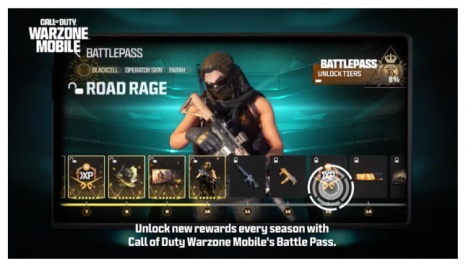Creating a successful ad campaign is crucial for promoting your new game and attracting players. However, navigating the advertising space has become increasingly challenging as competition grows. Cost is also a key factor, as ineffective ads can result in wasted investment and a poorly performing game.
In a guest post from AdQuantum Design, Ivan Razmakhov, the creative production director, shares insights on creative ad strategies. He explains how to tailor ad formats to different game genres, appeal to specific player motivations, and leverage various monetisation models for maximum impact.
The mobile game advertising landscape is saturated with diverse ad formats. In 2022 alone, there were over 12 million quarterly mobile game ad creatives, making it challenging for advertisers to capture user attention and drive conversions. Despite the abundance of ads, only a small fraction proves successful, with conversion rates averaging 3-5%.
Razmakhov dives into the nuances of selecting the right ad format for different mobile games and crafting compelling and effective ad content.
One of the most important factors for choosing the right ad format for a game is interest or motivation.
Ivan Razmakhov
Game-specific Ad Creative Strategies
For each game, a tailored approach to creating ad formats is essential. Combining formats or focusing on specific gameplay elements can enhance the appeal to target audiences and align with developers’ objectives.
1. Interests and Motivations
When designing ads, it’s crucial to consider the audience’s interests and motivations. Understanding player motivations, as outlined in GameRefinery’s Motivations and Demographics Snapshot Report, can guide ad concept development for mobile games.
By categorizing players based on motivations like thrill-seeking, problem-solving, competition, collaboration, and more, advertisers can tailor ad content to resonate with specific player preferences.
Utilizing a chart specific to each game, advertisers can prioritize and incorporate key motivations into ad concepts to enhance engagement and relevance.

By dissecting a game’s elements and translating them into ad triggers, advertisers can create compelling and impactful ad campaigns.
2. Type of Monetisation
The choice of ad creative format is influenced by the game’s monetisation model. Games utilizing in-app purchases, in-app ads, or a hybrid approach require distinct ad strategies to cater to player behaviors and preferences.
For games relying on in-app purchases, showcasing exclusive items, boosters, or additional content through engaging gameplay ads can drive conversions and enhance the gaming experience for players.
Hybrid monetisation games offer flexibility in creative approaches, allowing for varied ad concepts that highlight gameplay simplicity and intriguing narratives to captivate players.
Understanding the game’s monetisation model is crucial in crafting effective ad creatives tailored to maximize player engagement and retention.

Driving Ad Performance
Considering the traffic source when selecting ad creatives is vital for optimizing campaign performance. Playable ads, static ads, and user-generated content formats perform differently across various platforms, emphasizing the importance of aligning creative formats with advertising channels.
- Playable ads may underperform on paid social sources but excel on ad networks.
- Network algorithms favor gameplay or meta-misleading creatives with playable end cards for optimal results.
- UGC ads are effective on platforms like TikTok but should be integrated into successful 2D or 3D creatives for initial testing.
We need to highlight the coolest parts of a game super quickly. Sometimes, that involves a bit of exaggeration to really draw in potential players and get them hooked.
Ivan Razmakhov
Utilizing Misleading Ads
Misleading ad strategies can be impactful for games with complex gameplay, except hyper-casual games. While misleading ads can set false expectations, meta-misleading creatives enhance game elements without misrepresentation, making them engaging and appealing.
By showcasing gameplay features in a captivating manner, misleading ads can attract players’ attention and drive interest in the game.

Key Takeaways
Developing ad campaigns for mobile games requires a blend of game knowledge, player insights, and effective ad strategies. By aligning ad formats with game elements, player motivations, and monetisation models, advertisers can create compelling ads that resonate with audiences and drive performance.
Key considerations include defining the game’s monetisation model, analyzing core game mechanics, understanding player motivations, researching competitors, and tailoring ad formats to traffic sources.
Edited by Paige Cook


